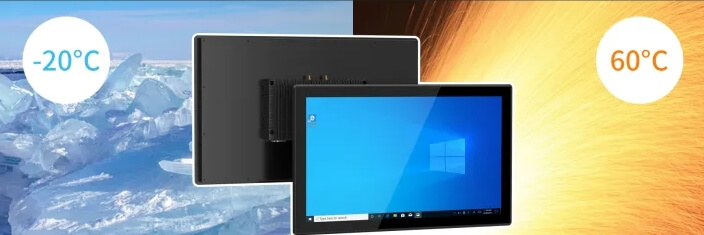By Automation Components Specialist
Pins and shafts are fundamental to automation system reliability. This article details 11 critical types (including the cantilever shaft) with technical specifications and commercial insights for purchasers and traders.
1. Cylindrical Pin
Definition: Standard cylindrical shape with tight tolerances (ISO 8734).
Key Functions:
- Precision alignment of components (e.g., sensor mounts on frames)
- Transmit moderate shear forces
Ideal For: High repeatability systems like CNC fixture plates.
2. Taper Pin
Definition: 1:50 taper ratio for self-locking (DIN 1).
Key Functions:
- Secure positioning in high-disassembly applications (e.g., robotic arm joints)
- Resist alternating loads
Ideal For: Heavy-duty presses requiring frequent mold changes.
3. Internal Threaded Pin
Definition: Internal thread at one end (ISO 8733).
Key Functions:
- Tool-free extraction using a slide hammer
- Protect blind holes from wear
Ideal For: Maintenance-intensive gearboxes in packaging machinery.
4. Spring Pin (Roll Pin)
Definition: Slotted cylindrical design with radial elasticity.
Key Functions:
- Anti-vibration locking (e.g., AGV wheel hubs)
- Absorb dynamic shocks
Ideal For: Automotive welding line fixtures under vibration.
5. Grooved Pin
Definition: Axial grooves for post-installation expansion.
Key Functions:
- High shear resistance (e.g., crane boom connections)
- Thread-free heavy-load fastening
Ideal For: Construction machinery pivot points.
6. Dowel Pin
Definition: Ultra-hardened (HRC 60+) and ground finish.
Key Functions:
- Micron-level repeatability (e.g., semiconductor lithography stages)
- Eliminate assembly error stacking
Ideal For: CNC tool changer alignment.
7. Quick-Release Pin
Definition: Spring-loaded button or ring for instant removal.
Key Functions:
- Tool-less modular reconfiguration (e.g., logistics sorter tooling)
- Anti-drop safety mechanisms
Ideal For: Flexible manufacturing lines with rapid changeovers.
8. Expansion Pin
Definition: Slotted hollow cylinder with >5% radial expansion.
Key Functions:
- Compensate for hole tolerances (e.g., cast part assemblies)
- Dampen noise and vibration
Ideal For: Plastic component joints in appliance assembly.
9. Cotter Pin (Split Pin)
Definition: Cross-hole at the end for locking.
Key Functions:
- Double anti-loosening (e.g., agricultural drivetrains)
- Low-cost replaceability
Ideal For: Outdoor equipment exposed to vibrations.
10. Shaft (Shoulder Screw)
Definition: Head or groove for axial retention.
Key Functions:
- Rotational support (e.g., robotic wrist bearings)
- Handle combined radial + axial loads
Ideal For: AS/RS stacker crane guide wheels.
11. Cantilever Shaft
Definition: Single-side supported shaft resisting bending moments (Custom design per ISO 286-2 tolerances).
Key Functions:
- Eccentric load bearing in robotic end-effector linkages
- Minimize deflection under torque (Max deflection <0.1mm/m at 50 N·m)
Design Specifications: - Material: Alloy steel (e.g., 4140/SCM440) with case hardening (HRC 45-50)
- Surface: TiN coating (3-5μm) for wear resistance in sliding contacts
- Standard Sizes: Diameter 6-50mm, Length 50-500mm (customizable)
Ideal Applications: - Conveyor suspended arms in automotive assembly
- High-speed pick-and-place unit rotating joints
Procurement Tips: - Require FEM (Finite Element Analysis) reports for load distribution validation.
- Pair with tapered pins (Section 2) for alignment in rebuildable systems.
Purchasing Decision Matrix
| Criteria | Recommended Type | Key Metrics |
|---|---|---|
| High Shear Loads | Grooved Pin (Section 5) | Shear strength >500 MPa |
| Bending Moments | Cantilever Shaft (Section 11) | Deflection <0.2° at max torque |
| Frequent Disassembly | Quick-Release Pin (Section 7) | Cycle life >10,000 insertions |
| Corrosive Environments | AISI 316L Stainless Steel Pins | Salt spray test >500 hours |
Optimizing for Reliability & Cost
Selecting the right pin or shaft requires balancing load capacity, environmental factors, and total ownership cost. For cantilever shafts, prioritize suppliers offering:
- Custom Heat Treatment to prevent fatigue cracks.
- Dimensional Certification (e.g., ISO 2768-mK).
- On-Site Testing for deflection and wear resistance.
Pro Tip: Use parametric 3D configurators to preview cantilever shaft mounting clearances and avoid interference issues.


